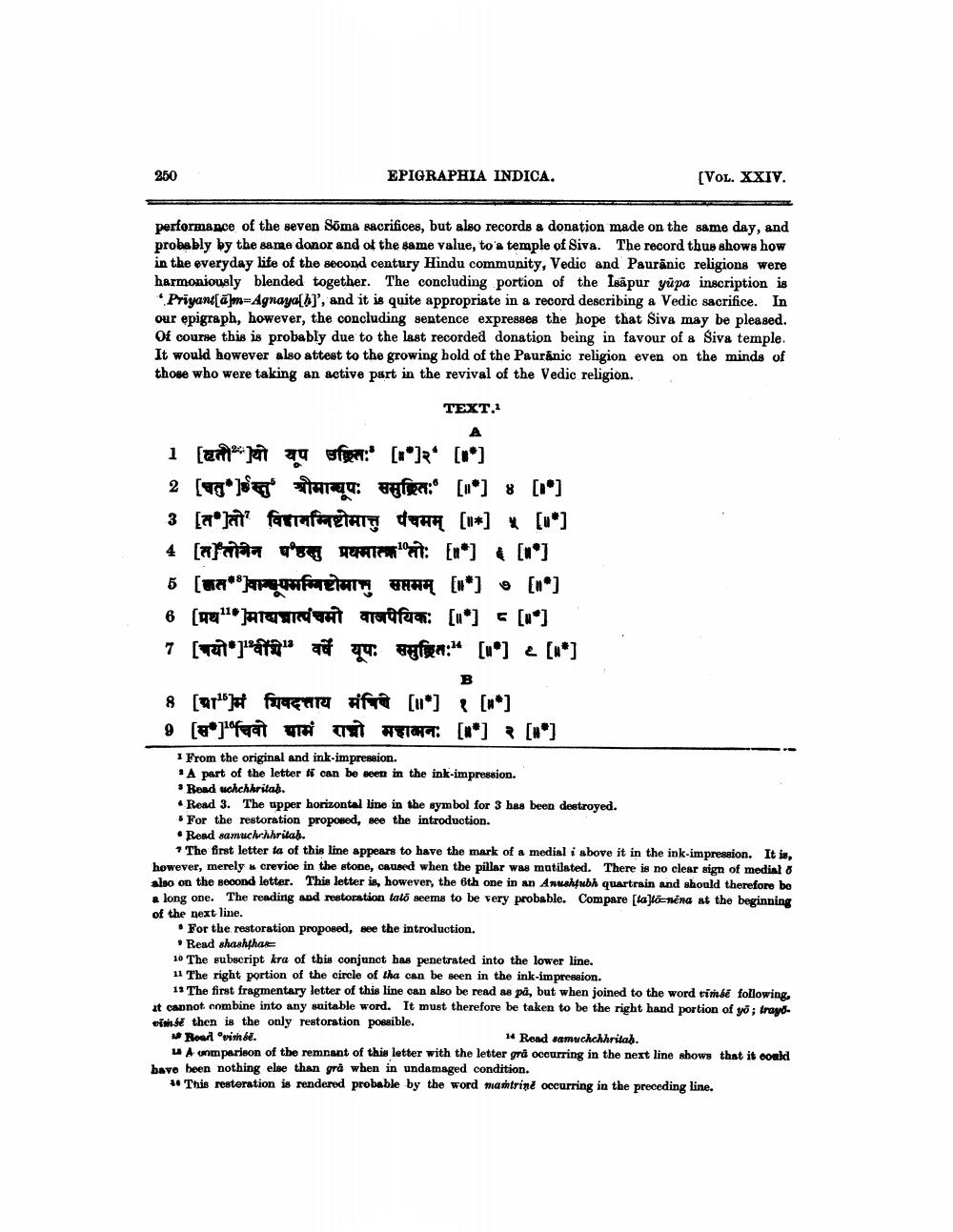________________
250
EPIGRAPHIA INDICA.
(VOL. XXIV.
performance of the seven Söma sacrifices, but also records a donation made on the same day, and probably by the same donor and of the same value, to'a temple of Siva. The record thus shows how in the everyday life of the second century Hindu community, Vedic and Paurānic religions were harmoniously blended together. The concluding portion of the Isäpur yüpa inscription is
Priyant[@]m-Agnaya[b]', and it is quite appropriate in a record describing a Vedic sacrifice. In our epigraph, however, the concluding sentence expresses the hope that Siva may be pleased. Of course this is probably due to the last recorded donation being in favour of a Siva temple. It would however also attest to the growing hold of the Pauranic religion even on the minds of those who were taking an active part in the revival of the Vedic religion.
TEXT.1
1 [auti bent nu ofen:" [no]zo [n*] 2 [99*]stant Arqu: arga: [*] 8 [1*] 3 [aujat? farrafametnig 1994 [ue] * [u*] 4 [mman osan leaft: En*] & [no] 5 [mm*mmenfaelaTM HAAH [w*] o [n*] 6 (9*** JATOWIRITAT aceroferam: [u*] = [w*) 7 [terloje47a" ang tu agrega:** [v] + [**] 8 (916) fwecara difera (u*] { [**] 9 [**]lofaat A
1 947. [**] [#]
B
1 From the original and ink-impression. * A part of the letter ti can be seen in the ink-impression. * Read uchchkritah. . Read 3. The upper horizontal line in the symbol for 3 has been destroyed. . For the restoration proposed, see the introduction. • Read samuclrhhrilah.
* The first letter ta of this line appears to have the mark of a medial i above it in the ink-impression. It is, however, merely u crevioe in the stone, caused when the pillar was mutilated. There is no clear sign of medial o also on the second letter. This letter is, however, the 6th one in an Anwahiubh quartrain and should therefore be a long one. The reading and restoration lalo seems to be very probable. Compare (tallöneng at the beginning of the next line.
• For the restoration proposed, see the introduction,
Read shashthak 10 The subscript kra of this conjunct has penetrated into the lower line. 11 The right portion of the circle of tha can be seen in the ink-impression.
1. The first fragmentary letter of this line can also be read as på, but when joined to the word time following at cannot combine into any suitable word. It must therefore be taken to be the right hand portion of yo; traya vimse then is the only restoration possible. Read Ovimét.
14 Road samuchchhritah. U A womparison of the remnant of this letter with the letter grå occurring in the next line shows that it could bavo heen nothing else than grå when in undamaged condition.
** This restoration is rendered probable by the word mantrinè occurring in the preceding line.




